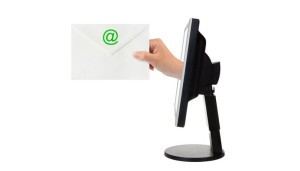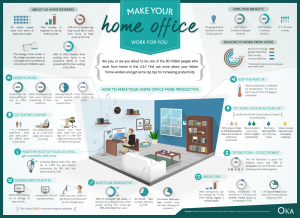On Wednesday, Zvi wrote about how we don’t just try to find as many customers as possible — really, we’re looking for the right customers. And this all-star customer is committed to learning and using Contactually. They hold themselves accountable in order to get the most out of Contactually, and establish using it as a part of their daily routine.
This all-star customer sounds so dreamy and perfect in the SaaS world. But as someone who uses a multitude of these platforms, it’s increasingly hard to incorporate these tools into my daily routine. However, the platforms I love are the ones firmly planted in my routine, and I can distinctly remember the people from those platforms helping me integrate their services into my day.
Here are five ways to integrate a new service into your routine (or your users routine):
1. Hold Yourself Accountable
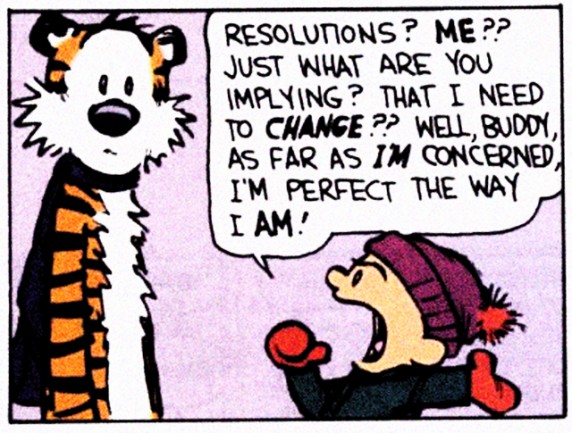
It’s the time of the year where most people have set their New Year’s resolutions and started chipping away on achieving them. This is where you go to gym only to realize that every treadmill and elliptical is filled with others trying to fulfill their own resolutions. By mid-February, however, the gym becomes a little less crowded as people begin to neglect their ambitious January 2015 resolutions.
This year, I resolve to hold myself more accountable, and that begins with the services that I’m using as a marketer. Accountability is defined as the requirement to be responsible for something. The accountability you now hold for the new service you purchased is under your responsibility to use, learn, and/or keep track of. However, if you don’t hold you own self accountable for integrating this tool into your routine, it can fall to the wayside — just like that “going to the gym” resolution.
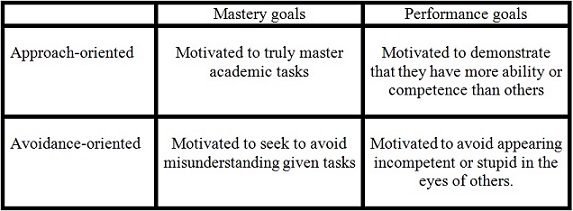
I went through product training for Contactually this week, and at the end of each meeting I was assigned some homework that I needed to complete. Granted, I want to learn everything I can about Contactually, but as soon as the word “homework” was mentioned I felt I was on the hook to really complete the assignment (probably to fulfill my inner teacher’s pet). A more psychological example of this can be found with the two different types of goal orientation — Mastery Goal Orientation, and Performance Orientation. Mastery Goal Orientation individuals want to develop their competency and improve their over all abilities for that skill. Performance Orientation individuals want to demonstrate their competence and usually want to avoid their incompetencies.
I don’t know the exact psychology around the idea of “homework,” but this is an idea that is easily translatable into any service, and because we’ve all been instilled with the idea of homework, most of us are willing to complete some type of task in order to display that we’ve achieved something or developed an important competency. That’s one way to keep yourself accountable.
2. Commitment
Commitment and accountability basically go hand in hand. Committing to using a product or service seems relatively easy, but actually putting in sufficient time and mental bandwidth, day after day, is a whole different story. Whether you sign up for a monthly or yearly plan, you’re paying with money from your budget, which puts you on the hook money-wise — but is that enough?
I researched a bit on committing to tasks and learning new skills, and I stumbled on some productivity advice from Jerry Seinfeld. He gets a big wall calendar that has a whole year on one page, and hangs that calendar on a wall that can be seen every day. Then, he marks each day where he’s successfully completed his task (his is writing) with a big red “X” .
“After a few days,” he says, “you’ll have a chain. Just keep at it and the chain will grow longer every day. You’ll like seeing that chain, especially when you get a few weeks under your belt. Your only job next is to not break the chain.’”
You’ll visually notice if you break your commitment.
Something can be put in place for your users as well. For example, I play a lot of iPhone games, especially really ridiculous ones like Cooking Fever, which I’ve gotten addicted to recently. In Cooking Fever, you get extra coins every day you log in. With these extra coins, I can purchase higher quality pieces of kitchen gear for my different restaurants. I’m a little embarrassed to I admit this, but believe it or not, this same principle can be applied to something more useful when trying to build committment from users or clients. You can show their progress as they log in each day, gamify your training by giving them badges when they learn something, or reward them with an A+ when they follow up with their contacts.
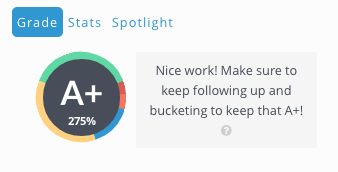
3. Plan
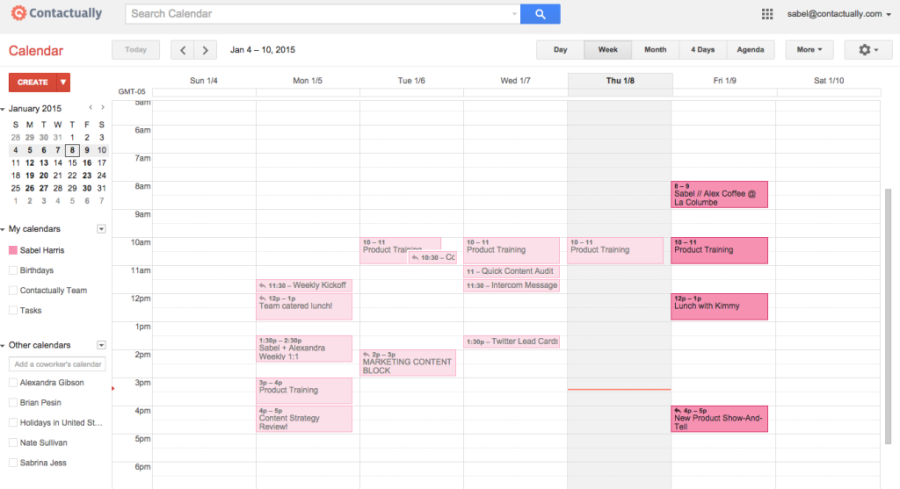
Planning the usage of a new service or tool throughout your day will help ensure its successful integration into your routine. One simple step you can take towards this is to create calendar events that specifically set aside time to use the service. In my Google calendar, I add different events to each day to use Contactually or to check different analytics to see what’s going on in the world of marketing for the day.
Another idea is to set up some type of alert, notification, or reminder that will let you know in real-time to use whatever new service you’re trying to get the most of. I prefer desktop notifications, so I can immediately see when there is something that I need to do.
4. Learn the Whole Thing
As I mentioned before, my week has been filled with product training for Contactually. I learned how to bucket contacts, create templates, send followups via email and social media channels, send Scalemail, setup Programs, and… pretty much everything else you can do with Contactually.
I’ve also had the opportunity to sit in to listen to sales calls and attend Office Hours to see how people are actually using Contactually. I was able to hear the questions they have, and even though I heard the answer to their questions, I made it a priority to try and find those answers myself. I also dove into the awesome training site that just relaunched and looked at each of the sections to get a better sense of Contactually.
Now, I probably sound like an overachieving, brown-nosing, teacher’s pet — but I want to learn Contactually through and through, so I can better answer common questions through content, and anticipate higher level concepts that could use in-depth explanations and blog posts.
These are just some of the reasons services should have a program, training plan, academy, and/or educational resource set up to ensure that users are fully trained when it comes to your service. This is essential in making what you do sticky in everyday routines, as it gives people an opportunity to invest their time to gain the benefits of learning your service. If your users don’t know how to use your platform… you can’t expect them to use it every day.
5. Make it a Habit
This is almost self-explanatory, but knowingly making something a habit (without nicotine) requires some amount of manual effort. When I first started using Hubspot, I tried to put a few things into place to make sure I would always use the platform. First, I made an effort every morning to open a tab and login to Hubspot. It would then allow me to check out the dashboard to see the overall monthly look. Secondly, I activated a setting where I could send myself a daily report about where we were at in relation to our monthly lead goal.
As I’m getting ramped up with Contactually, I’m trying to establish the same pattern. I have it in my bookmarks bar, and I have a tab with it open throughout my entire day. I’m in the process of bucketing all of my contacts and setting up the appropriate follow-up schedule for each bucket.
The actual process of a habit can best be explained by Charles Duhhig and his book The Power of Habit, which is one of my absolute favorite books. There’s a three step loop for habits, and it goes as follows:
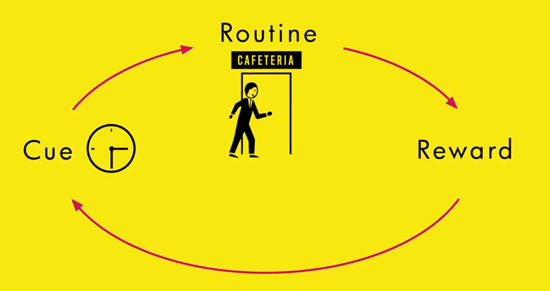
- A Cue
- Routine
- A Reward
My habit can be broken down into those three steps with my cue as getting to work, my routine being the opening up my computer and loading of Google chrome with a tab opened to Contactually, and my reward as my morning cup of tea afterwards (after my cup of coffee, of course). Now, telling your users to make your service a habit is easier said than done, so making it easy for them to achieve daily tasks and/or providing suggestions for how they can use your service every day can help them incorporate your tool as a habitual need; especially when you keep this habit loop in mind.
I’ve heard from sales calls and experienced first-hand the concern potential customers have about a new service they’re interested in being a potential disruption to their existing tasks. I fully understand the sentiment, but in order to make something more efficient, there fact is that you may have to put in some effort to incorporate a new service into your routine. In the end it, though, it’ll be worth the work if you’re able to improve your overall daily routine.
(274)





